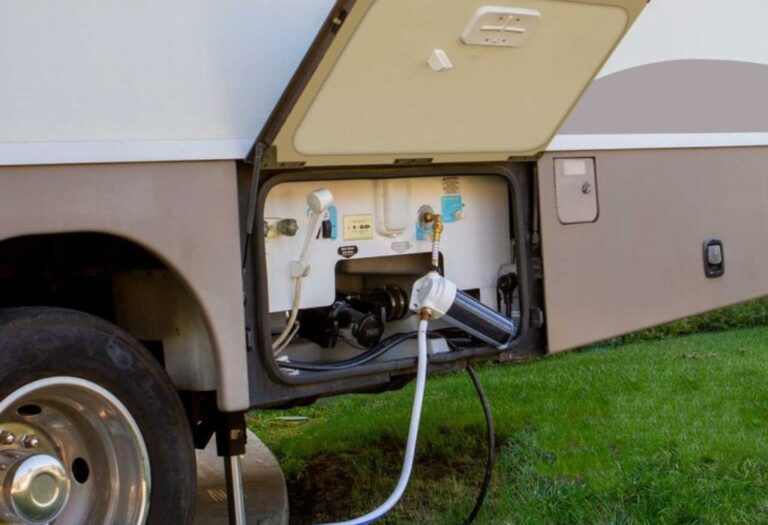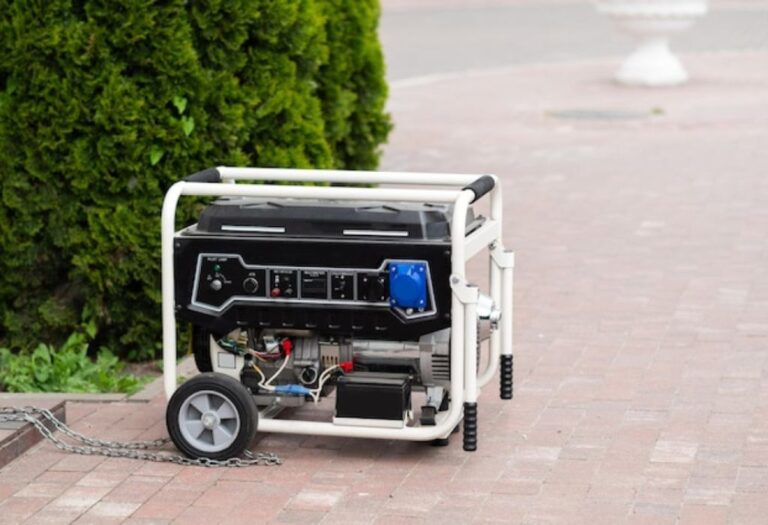Do All RV Water Heaters Have an Anode Rod?
Imagine being miles from the nearest campground, ready for a warm shower after a long day, only to find freezing water pouring from the tap.
This happens more often than people realize, usually because the RV water heater corroded from the inside.
The small metal rod hidden in many heaters is what prevents this problem.
It’s called an anode rod, and it sacrifices itself to protect your water tank from rust and mineral buildup.
According to RVShare, over 70% of RV owners experience corrosion in their water heaters within three years when the anode rod isn’t checked regularly.
Data from RV Life also shows that proper anode maintenance can reduce replacement costs by up to 50%.
But not all RV water heaters actually have one.
Some modern designs are built from materials that don’t need corrosion protection at all.
Knowing which type you own determines how you care for it.
This guide explains which heaters include an anode rod, how to inspect or replace it, and how to make your RV’s hot-water system last for years.
What Is an RV Water Heater Anode Rod?

An RV water heater anode rod is a small but crucial component that guards the tank against corrosion.
It attracts minerals and impurities in the water so the tank walls remain intact.
These rods are made of magnesium, aluminum, or an alloy of both metals.
They corrode intentionally, protecting the steel lining inside the tank.
When exposed to water and heat cycles, the rod slowly deteriorates over time.
This sacrificial process saves your water heater from rust and leaks.
Without one, minerals in hard water can quickly damage the tank surface.
That is why nearly every steel-lined RV heater relies on an anode rod for protection.
What does an anode rod do in an RV water heater?
It prevents corrosion by drawing minerals away from the tank metal.
Why is it called a sacrificial rod?
Because it corrodes first, preserving the tank’s interior surface.
What metals are used to make anode rods?
Magnesium and aluminum are most common; each offers different lifespans and protection levels.
How long does an anode rod typically last?
Usually 12–24 months, depending on water hardness and usage frequency.
Can I run an RV water heater without an anode rod?
Only if it has an aluminum or composite tank that’s already corrosion-resistant.
Do All RV Water Heaters Have an Anode Rod?
Not every RV water heater includes an anode rod.
It depends on the tank material and manufacturer design.
Suburban water heaters use steel-lined tanks that always require an anode rod.
Atwood and Dometic models, however, use aluminum tanks that naturally resist corrosion.
Around 60% of RVs in North America use Suburban systems that rely on anode protection.
Knowing your brand helps determine whether this part is necessary for your maintenance schedule.
Which brands use anode rods?
Suburban and other steel-tank manufacturers.
Which brands do not?
Atwood and Dometic, which feature aluminum or composite tanks.
How can I tell if mine has one?
Look for a large hex-shaped plug at the bottom of the tank — that’s the anode rod.
What happens if a heater without a rod is fitted with one?
It offers no benefit and may create sealing or leak issues.
Do tankless RV water heaters need one?
No, because they have no storage tank that could corrode.
How to Identify If Your RV Water Heater Has an Anode Rod
Start by locating your heater’s access panel and checking the brand label.
If it says Suburban, it almost certainly contains an anode rod.
The rod doubles as the tank’s drain plug, typically found near the bottom edge.
It can be recognized by a 1-1/16-inch hex head fitting.
Inspecting it takes less than five minutes.
Always disconnect power and let the water cool before removing the plug.
Where is the anode rod located?
At the base of the heater, serving as the drain plug.
Do I need to drain the tank to see it?
Yes, draining prevents water pressure and allows safe inspection.
What tools are required?
A socket wrench, Teflon tape, and gloves.
What if my heater doesn’t have one?
Continue regular flushing to prevent mineral buildup.
Can I retrofit an anode rod into my tank?
Not unless the manufacturer specifically supports that modification.
Why Some RV Water Heaters Don’t Require an Anode Rod
Certain RV water heaters skip the anode rod completely because of their tank composition.
Aluminum or composite tanks naturally form an oxide layer that blocks corrosion.
These tanks are lighter, more efficient, and designed for long-term durability.
Adding an anode rod to them can actually cause leaks or chemical reactions.
Why do aluminum tanks not need an anode rod?
Because aluminum is self-protecting and resists rust.
Does skipping the anode rod save money?
Yes, though the main advantage is less maintenance.
Can adding one cause problems?
It can corrode threads and compromise seals.
Do all modern RVs skip anode rods?
No, only those built with corrosion-resistant materials.
What about hybrid water heaters?
Some combine aluminum linings with partial protection systems.
How Long Do Anode Rods Last in RV Water Heaters?
The lifespan of an RV anode rod depends heavily on water quality and usage.
Hard water with high mineral content wears rods out faster.
RV Life data suggests that replacing anode rods annually can extend tank life by 50%.
Visual inspection is the best indicator of when to replace.
When more than 75% of the rod has dissolved, it’s time for a new one.
Ignoring replacement risks costly leaks or full tank failure.
When should you replace it?
Once it’s mostly corroded or at least once per year.
What shortens its lifespan?
Hard water and continuous heating cycles.
Can I use aluminum instead of magnesium?
Yes, aluminum rods last longer but protect slightly less.
Does soft water affect it?
Yes, it slows corrosion and extends lifespan.
How should it be stored during winter?
Remove, dry, and reinstall before the next season.
Replacing an RV Anode Rod Step by Step
Turn off water and power to the heater.
Allow it to cool completely before draining.
Remove the old rod using a socket wrench.
Wrap the new rod’s threads with Teflon tape and tighten firmly.
Once installed, refill the tank and check for leaks.
Always flush the heater to remove sediment before operation.
How often should I replace an RV anode rod?
Every 12 months or sooner if visibly corroded.
Can I replace it myself?
Yes, it’s an easy DIY maintenance task.
Should I flush the tank after replacement?
Always, to remove debris and mineral residue.
What type fits Suburban models?
¾-inch NPT magnesium rod.
Can I mix rod metals?
Avoid mixing; it can trigger galvanic corrosion.
Common Problems with RV Anode Rods

Odors, rapid corrosion, and stuck plugs are common complaints.
These usually point to water chemistry issues or improper maintenance.
Sulfur smells come from bacteria reacting with magnesium.
Switching to an aluminum-zinc rod often eliminates the odor.
Why does my water smell bad after replacing the rod?
Because bacteria react with magnesium and produce hydrogen sulfide gas.
How do I stop the odor?
Use an aluminum-zinc rod or sanitize the tank with hydrogen peroxide.
What if the rod is stuck?
Use a breaker bar for leverage, but don’t overtighten during installation.
Why is my new rod corroding quickly?
Hard water or poor electrical grounding accelerates wear.
Can I reuse an old anode rod?
No, replace it once it’s mostly worn away.
Maintenance Tips to Extend Your RV Water Heater Life
Inspect the anode rod twice a year.
Flush the tank every season to clear sediment.
Install a water filter to minimize mineral buildup.
Always drain the heater during long storage periods.
How to keep the heater clean?
Flush with a vinegar solution or RV descaler.
Which filters help the most?
Sediment or carbon filters for hard-water regions.
Should I use chemical cleaners?
Yes, as long as they’re non-abrasive and RV-safe.
Can solar systems affect corrosion?
Yes, frequent heating and cooling cycles increase wear.
What’s the biggest mistake RV owners make?
Neglecting the anode rod until the tank fails.
Conclusion: Small Rod, Big Protection
The anode rod may be tiny, but it plays a huge role in RV water-heater health.
Not all heaters include one, yet those that do rely on it completely.
Checking this part twice a year can prevent corrosion, odor, and leaks.
For most RVs with Suburban steel tanks, it’s the cheapest insurance you can buy.
Before your next trip, verify whether your RV water heater uses an anode rod.
A quick inspection today could save hundreds on repairs tomorrow.
I’m David R. Coleman, the founder, lead writer, and lifelong tool enthusiast behind GarageToolPro.com. With years of experience in automotive repair, woodworking, and home DIY projects, I created this platform to share practical tips, detailed tool reviews, and step-by-step guides that help mechanics, hobbyists, and homeowners get the job done right the first time.






